Occupational safety training for parachute manufacturing.
99,000 ₫
Note: The above price is calculated per person and may vary depending on the number of trainees participating in the course and market fluctuations. For more accurate pricing support, please refer to the price list or contact our consultation staff directly.
Occupational safety is an important issue in parachute manufacturing factories and must be addressed promptly to ensure the health and safety of workers and to enhance the reputation of businesses. The Occupational Safety Training course is one of the effective solutions to raise awareness about accident prevention for workers involved in parachute production.
Table of Contents
Toggle1. Overview of Parachute
a. What is a Parachute?
A parachute (also called a gliding parachute) is a device used to slow down the free fall speed of a person or an object when jumping from a high place. A parachute works on the principle of air resistance, creating lift to slow down the falling process.
Parachute Structure
- Canopy: The largest part of the parachute, shaped like a cone or pyramid. The canopy is made of special fabric that can withstand high pressure and is water-resistant. When deployed, the canopy creates significant air resistance.
- Suspension Lines: Cables connecting the canopy to the user’s harness. They help distribute the force from the canopy to the user’s body.
- Harness: Secured tightly to the user’s body. The harness keeps the jumper safe and stable when the parachute is deployed.
- Deployment Device: A mechanism that helps open the parachute correctly. It can be mechanical or automatic, depending on the parachute type and application.
Operating Principle
When a user jumps from an aircraft or a certain height, the parachute opens to create a large surface area, increasing air resistance. This reduces free fall speed and generates lift to help the user land safely.
Types of Parachutes
- Sport Parachute: Used in sport parachuting. Designed specifically to improve performance and control.
- Emergency Parachute: Used in emergencies to safely land from an aircraft.
- Paragliding Parachute: Has a structure designed for gliding in the air, different from sport parachutes in that it allows the user to move through the air for longer durations.
Benefits and Applications
- Rescue and Safety: Parachutes are crucial rescue devices in emergencies, especially in aviation.
- Extreme Sports: Used in sports like skydiving and paragliding, helping participants experience freedom and thrill.
- Research and Training: Utilized in training courses and research to improve techniques and safety in aerial activities.
Parachutes are important devices across many fields, from aviation safety to extreme sports.

b. Machinery Used in Parachute Production
1. Industrial Sewing Machines
- Automatic Sewing Machines: Used to sew parachute fabric pieces together. These machines can be programmed for complex stitching patterns at high speeds.
- Specialized Sewing Machines: Used for small details or where high precision is needed, such as sewing cables and components attached to the canopy.
2. Fabric Cutting Machines
- Automatic Cutting Machines: Cut fabric pieces accurately by size and shape. These machines increase speed and reduce errors during cutting.
- Laser Cutting Machines: Use laser beams to cut fabric with high precision and minimal distortion.
3. Fabric Testing Machines
- Strength Testing Machines: Test the durability of parachute fabric to ensure it withstands tensile forces and environmental conditions.
- Grip Testing Machines: Measure the fabric’s grip to ensure fibers do not slip or separate under load.
4. Air Compression Machines
- Parachute Deployment Test Machines: Test the parachute’s opening capability under simulated air pressure to ensure proper operation in real conditions.
5. Cable Processing Machines
- Cable Braiding Machines: Produce and braid cables to create connecting lines between the canopy and the harness.
- Cable Strength Testing Machines: Ensure cables have the necessary strength and load-bearing capacity.
6. Cutting and Folding Equipment
- Fabric Cutting and Folding Devices: Used to cut and fold fabric pieces into precise shapes and sizes before sewing.
7. Packaging Machines
- Automatic Packaging Machines: Package the finished products, including quality checking and preparing for shipment.
8. Quality Inspection Equipment
- Pressure Testing Equipment: Ensure parachute parts such as locks and cables operate correctly under pressure.
- Structural Integrity Testing Equipment: Evaluate parachute integrity to confirm no defects affect performance and safety.

c. Famous Parachute Brands
1. Performance Designs
- Introduction: Performance Designs (PD) is a leading brand in the sport parachuting industry. They are famous for high-quality parachutes with sophisticated design and reliable performance.
- Key Products: Sport parachutes with precise control capabilities.
2. PD (Precision Aerodynamics)
- Introduction: Precision Aerodynamics, known as PD, is a top manufacturer of paragliding and sport parachutes. They are known for innovative products and advanced technology.
- Key Products: Sport parachutes, paragliders, and rescue equipment.
3. Strong Enterprises
- Introduction: Strong Enterprises supplies parachutes for both sport and rescue needs. They are recognized for durability and reliability.
- Key Products: Rescue parachutes, sport parachutes, and support equipment.
4. Skydive Dubai
- Introduction: Skydive Dubai is not only a famous skydiving center but also manufactures and supplies high-quality parachute products.
- Key Products: Parachutes for sport and recreational activities along with support gear.
5. Airborne Systems
- Introduction: Airborne Systems is a leading manufacturer of rescue and sport parachutes, notable for advanced technology and high-quality design.
- Key Products: Rescue parachutes, sport parachutes, and safe landing systems.
6. Sunpath Products
- Introduction: Sunpath Products is known for durable sport parachutes and skydiving gear with high performance.
- Key Products: Sport parachutes, harnesses, and other accessories.
7. Para Gear
- Introduction: Para Gear offers a wide range of parachute-related products, from sport parachutes to rescue equipment, well known for product quality and customer service.
- Key Products: Sport parachutes, rescue gear, and accessories.
8. Squirrel
- Introduction: Squirrel is a renowned brand in the paragliding industry, offering innovative products with modern designs.
- Key Products: Paragliders and paragliding accessories.
9. Uptube
- Introduction: Uptube specializes in parachutes for sport and rescue activities, known for sophisticated designs and high performance.
- Key Products: Sport parachutes and rescue parachutes.
10. Jump Shack
- Introduction: Jump Shack is one of the oldest manufacturers in the industry, providing durable parachutes with precise design.
- Key Products: Sport parachutes, harnesses, and accessories.

d. Specific Jobs in a Parachute Production Factory
Group 1
- Executive Director, Deputy Executive Director, and Department Heads in the parachute production factory.
Group 2
- Safety Officers: Manage safety in the factory, design safety procedures, supervise and urge employees to comply with safe work procedures.
Group 3
- Fabric Cutting: Use automatic cutting machines or hand-cut fabric pieces into exact shapes and sizes according to design.
- Sewing: Sew fabric pieces together to create the canopy. Use industrial sewing machines for strong and precise stitching.
- Assembly: Assemble parachute components, including cables, harnesses, and other accessories. Ensure all parts are correctly and securely connected.
- Quality Inspection: Inspect finished parachutes to ensure they meet quality and safety standards. Use pressure testing, strength testing, and other equipment.
- Packaging: Package finished parachutes and prepare them for shipment. Ensure proper packaging to avoid damage during transportation.
Group 4
- Office jobs, service, sales, marketing.
- Production management, quality management, human resource management, material management, financial and accounting management.
- Research and development of new products, design of packaging and product samples.
2. Overview of Occupational Safety Training Course for Parachute Production
Within this article, we focus on issues surrounding Group 3, because Group 3 is the group directly involved in the production process, facing the highest occupational safety risks. For reference to other groups, see here.
a. What is Group 3 Occupational Safety Training?
- Group 3 Occupational Safety Training are sessions that provide awareness on how to prevent occupational accidents for workers.
- The safety training course helps workers recognize and avoid hazards, reducing risks of occupational accidents during work.
REGISTER FOR OCCUPATIONAL SAFETY TRAINING SERVICE
b. Training Duration
Initial safety training duration
- The total training time must be at least 24 hours, including exam time.
- 8 hours of theory on policies and laws regarding occupational safety and hygiene
- 8 hours of theory on basic knowledge of occupational safety and hygiene
- 4 hours of theory on specialized training content
- 2 hours of practical training on specialized content
- 2 hours of theoretical exam at the end of the training course
The safety training center will arrange the training time into multiple sessions depending on the scheduling for employees. Usually, there are 6 training sessions over 3 days, provided the manufacturing company arranges continuous training time.
Periodic safety training duration
- Before the occupational safety card expires, workers who want to renew it must complete a periodic occupational safety training course, with periodic training time at least 50% of the initial training duration.
Explanation: the total periodic occupational safety training time must be at least 12 hours, including exam time. After completing the periodic training and passing the exam, workers will be re-issued or extended their occupational safety card.
c. Training Course Content
| No. | TRAINING CONTENT | TRAINING DURATION (HOURS) | |||
| Total | Including | ||||
| Theory | Practice | Exam | |||
| I | System of policies and laws on occupational safety and hygiene | 8 | 8 | 0 | 0 |
| 1 | Overview of the legal documents system on occupational safety and hygiene. | 6 | 6 | ||
| 2 | System of standards and technical regulations on occupational safety and hygiene. | 1 | 1 | ||
| 3 | Specific regulations by state management agencies on occupational safety and hygiene when building new, expanding or renovating constructions, facilities for production, usage, storage, preservation, and inspection of machinery, equipment, materials, and substances requiring strict occupational safety and hygiene. | 1 | 1 | ||
| II | Basic knowledge of occupational safety and hygiene | 8 | 8 | 0 | 0 |
| 1 | Basic knowledge of hazardous and harmful factors at the workplace. | 4 | 4 | ||
| 2 | Methods to improve working conditions. | 1 | 1 | ||
| 3 | Safety culture in production and business. | 1 | 1 | ||
| 4 | Rights and obligations of employers and employees; policies and regimes on occupational safety and hygiene for workers; roles and responsibilities of safety and hygiene network members. | 1 | 1 | ||
| 5 | Occupational safety and hygiene rules, safety signs, instructions, use of safety devices and personal protective equipment; first aid skills for occupational accidents, and prevention of occupational diseases. | 1 | 1 | ||
| III | Specialized training content | 6 | 4 | 2 | 0 |
| Comprehensive knowledge about types of machinery, equipment, substances generating hazardous and harmful factors; analysis, risk assessment and management of occupational safety and hygiene, safe working procedures with machinery, equipment, and substances requiring strict safety and hygiene. | 6 | 4 | 2 | ||
| IV | Final safety training exam | 2 | 2 | 0 | 0 |
| Total | 24 | 22 | 2 | ||
See more training content of the 6 groups
d. Occupational Safety Card
After completing the occupational safety training course and passing the exam, workers will be issued an occupational safety card (commonly called occupational safety certificate for Group 3).
The Group 3 safety card clearly shows information such as full name, date of birth, specific job and working environment. It also includes training duration, official red stamp, and signature confirming course completion.
According to the card issuance regulations specified in Clause 2 of Article 24 of Decree 44/2016/ND-CP, there are two cases:
- If the employer and employee have a labor contract, then the employer must sign, stamp, and endorse the safety card for the Group 3 worker after the worker completes the safety training course from the authorized training unit and passes the exam.
- If the worker is freelance, seasonal, without a labor contract, the training unit must sign, stamp, and endorse the safety card for the worker after they complete the safety training and pass the exam.

3. Identifying Hazards Affecting Workers in Parachute Production
Machine-Related Hazards
- Hazard: Machines such as cutting machines, industrial sewing machines, and processing machines can cause injuries if not used properly. Risks include cuts, machine jams, and injuries from moving parts.
Material-Related Hazards
- Hazard: Exposure to chemicals, fabrics, or materials that may cause skin irritation, respiratory issues, or other health problems.
Hazards from Cutting and Sewing Work
- Hazard: Cutting fabric by machine or by hand may cause cuts, while sewing may lead to injuries from sewing machines or needles.
Hazards from Equipment Inspection and Maintenance
- Hazard: Inspecting and maintaining equipment can lead to accidents if devices are not turned off or if maintenance is improperly performed.
Hazards in the Work Area
- Hazard: Work areas may have risks of slipping, falling, or collisions due to uneven floors or obstacles.
Hazards from Heavy Work
- Hazard: Moving and lifting heavy materials can cause musculoskeletal injuries.
Hazards from Pressure Testing
- Hazard: During quality inspections, especially pressure tests, there is a risk of explosion or leaks.
Hazards from Stress and Fatigue
- Hazard: Long working hours or high-pressure conditions can cause fatigue and affect work performance.

4. Safety Measures in Parachute Production
Training and Education
- Safety Training: Ensure all employees are fully trained on safety procedures, equipment use, and accident prevention measures.
- Procedure Guidance: Provide detailed instructions on how to safely operate machinery and equipment, as well as emergency response procedures.
Use of Personal Protective Equipment (PPE)
- Gloves: Use protective gloves when handling fabrics, chemicals, and machinery to prevent cuts or irritation.
- Safety Glasses: Wear safety glasses to protect eyes from dust, chemicals, or machine debris.
- Masks and Respiratory Protection: Use masks when exposed to chemicals or dust that may harm the respiratory system.
- Safety Shoes: Wear shoes with slip-resistant soles and protective toes to avoid injuries from falling objects or slips.
Equipment Maintenance and Inspection
- Regular Maintenance: Conduct regular maintenance and inspections to ensure machinery and equipment operate safely and correctly.
- Equipment Checks: Inspect all devices and tools before use to detect potential issues.
Chemical and Material Management
- Chemical Storage: Store chemicals properly in labeled containers according to safety regulations.
- Safe Chemical Use: Ensure chemicals are used as instructed and with appropriate protective equipment.
Work Area Organization
- Area Cleaning: Keep work areas clean and free of obstacles to prevent slips, trips, and collisions.
- Lighting and Ventilation: Ensure adequate lighting and good ventilation to reduce eye strain and respiratory issues.
Implementation of Safety Procedures
- Machine Operation Procedures: Follow safety procedures when operating cutting machines, sewing machines, and other equipment to reduce accident risks.
- Lifting and Moving Procedures: Use safe techniques for lifting and moving to avoid musculoskeletal injuries; use support equipment when necessary.
Risk Monitoring and Assessment
- Risk Assessment: Conduct regular risk assessments to identify potential hazards and adjust preventive measures as needed.
- Health Monitoring: Monitor employee health to detect early work-related health issues.
- Periodically conduct work environment monitoring at factories, collecting and analyzing harmful factors for workers to adjust and reduce hazards to prevent occupational diseases.
Emergency Preparedness
- Emergency Plan: Develop and maintain emergency response plans, including first aid, evacuation, and incident reporting procedures.
- First Aid Training: Train employees in basic first aid and response actions in case of accidents.
Stress and Fatigue Management
- Rest Time: Provide adequate rest breaks to reduce fatigue and enhance focus.
- Mental Health Support Programs: Offer support and stress management programs to maintain good mental health.
Compliance with Legal Regulations
- Regulation Compliance: Ensure adherence to all local and national occupational safety laws and standards.
- Regulation Updates: Keep updated with the latest safety regulations and standards.
5. Benefits of Occupational Safety Training for Parachute Production
An Toan Nam Viet offers your business the following great benefits upon completing occupational safety training courses in accordance with Decree 44/2016/ND-CP on occupational safety and hygiene work. Companies, factories, and enterprises can expect:
- Workers can identify potential occupational accident hazards and take preventive measures to avoid accidents.
- Your enterprise can establish risk prevention measures in production, operation, and maintenance processes.
- Minimize costs associated with safety risks at work.
- Uninterrupted production processes help increase labor productivity and product quality.
- Compliance with labor safety laws reduces legal risks.
- Creates credibility and professionalism, thereby enhancing your brand.
Nam Viet’s training courses are solutions to prevent external risk factors affecting individuals, helping them avoid dangers that could cause injury or worse, death.
REGISTER FOR OCCUPATIONAL SAFETY TRAINING SERVICE
6. Customer Feedback After Completing Parachute Production Safety Training
An Toan Nam Viet has many years of experience accompanying numerous businesses across Vietnam in general and Southern provinces in particular. This responsibility is very precious to Nam Viet, which is why our Occupational Safety Training is increasingly professional. The motivation for our growth comes from positive feedback and suggestions from our clients. Below are some testimonials from partners we have served.
Bac Nam E&C Investment and Construction Joint Stock Company
“My first time using services at An Toan Nam Viet, I was surprised by the 24/7 enthusiastic support from the consulting team. The class organization was fast and convenient for our company. Thank you very much!”
Hoa Dat Construction and Trading Joint Stock Company
“Nam Viet’s service has helped us greatly in simplifying occupational safety and completing safety documentation for our work. The consulting team was enthusiastic and timely in answering our questions. 5 stars for Nam Viet.”
See more customer interviews after using An Toan Nam Viet’s services
7. An Toan Nam Viet’s Occupational Safety Training Capability
An Toan Nam Viet is a reputable and quality occupational safety training center in Vietnam today. Our safety training sessions are continuously conducted at production workshops, factories, or construction sites nationwide (all 63 provinces of Vietnam).
REGISTER FOR OCCUPATIONAL SAFETY TRAINING SERVICE
Occupational Safety Training License
- An Toan Nam Viet has been inspected and certified by the Department of Safety under the Ministry of Labor, Invalids and Social Affairs to be qualified for occupational safety and hygiene training activities. This further strengthens our capacity in occupational safety training.

Materials and Lectures
- Before safety training materials are used in ATLD training courses, they are reviewed and approved to ensure accuracy and effectiveness.
- Our instructors follow a standardized teaching method developed by An Toan Nam Viet, based on expert research and practical experience, to maximize knowledge absorption.
Facilities
- Controlling factors in the classroom environment enhances teaching performance and students’ learning effectiveness.
- Our training facilities offer spacious classrooms meeting standards for area, lighting, training equipment, etc.
8. Nationwide Reputable Quality Safety Training Center
At An Toan Nam Viet, we prioritize occupational safety training as a heartfelt mission. For us, imparting knowledge for workers to protect themselves is a contribution to national development.
To ensure training effectiveness, we meticulously prepare everything, from tools and teaching equipment to curricula, materials, sound, and lighting.
Our safety training instructors are experts with many years of experience. Some even have research work on hazard identification and prevention across various industries.
Their lectures are practical, engaging, and easy to understand for workers, helping them feel comfortable and absorb knowledge well. The content strictly follows Decree 44/2016/ND-CP.
Thus, workers learn numerous preventive measures and how to protect themselves, applying them appropriately in real work.
Our training center proudly provides reputable and professional occupational safety training with advantages such as:
- Competitive training costs while maintaining quality.
- Flexible training schedules aligned with company production.
- Quick certification paperwork compliant with legal requirements.
- Experienced instructors with many years in the field.
- Classrooms controlled for optimal teaching and learning efficiency.
- Training materials tailored to enterprise occupational safety needs.
- Dedicated, professional service ensuring accurate and prompt customer support.

9. Additional Reference Materials for Parachute Production Occupational Safety Training
- Parachute Production Occupational Safety Materials
- Occupational Safety Training Materials Collection
- Occupational Safety Training Test Collection
- Parachute Production Occupational Safety Training Curriculum
- Parachute Production Occupational Safety Multiple Choice Test
No comments yet

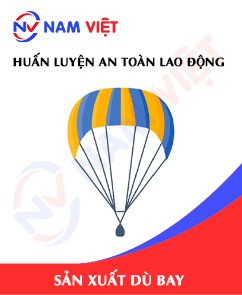
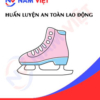
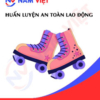



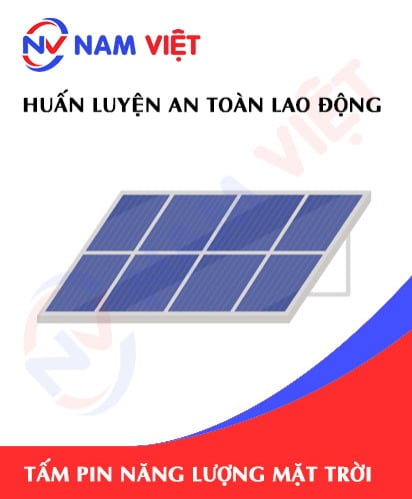


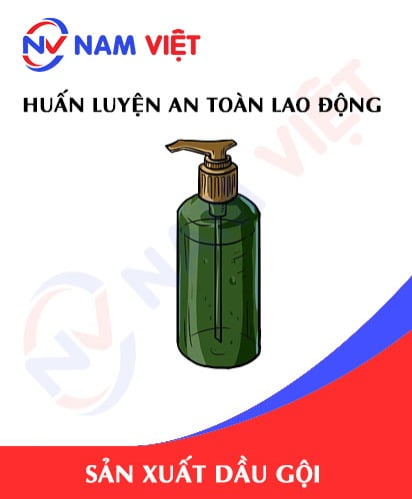
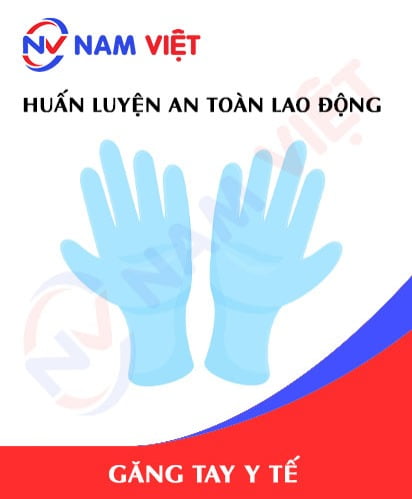

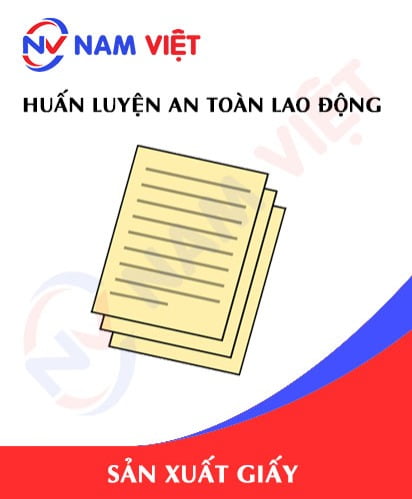
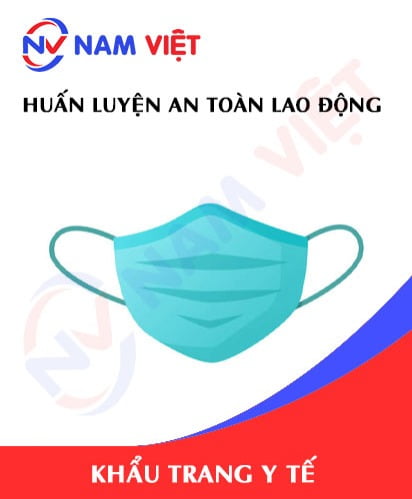
Review Occupational safety training for parachute manufacturing.
There are no reviews yet.